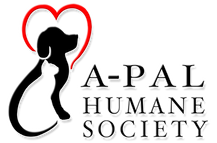March 2015 - the Red Tailed Hawk
|
Red Tailed Hawk (Buteo jamaicensis)
This is the most common hawk in North America and will be found in every type of open habitat. As one of the most frequently observed raptors in our region, you will find them soaring above open fields or perched atop telephone poles looking for their next meal. Though these are one of the largest birds you will see, even the largest females will weigh only about 3 pounds. Females are larger than males, and from a distance might fool you into thinking you see an eagle. Hard to believe, but when first hatched, they weigh only 2 ounces! Red-tailed hawks have large, broad, rounded wings, and a short, wide tail. Generally, they are rich brown above and pale underneath with the tail a cinnamon-red on top and pale below. Young birds don’t develop the rich red color in their tails until their second year. These hawks mostly eat mammals including voles, mice, wood rats, rabbits, and squirrels. They will also eat birds as well as snakes and carrion. Prey can weigh anywhere from less than an ounce to more than 5 pounds. Their diet helps farmers and gardeners by helping to eliminate destructive vermin. Our landscaping with isolated trees or small woodlots provides nest sites and elevated perches for hunting. Their numbers have increased in North America as they have adapted so well to living alongside humans. If you would like to see more of red-tailed hawks from the comfort of your home, check out Cornell Lab of Ornithology’s web cam of Big Red and Arthur. Red-tailed hawks frequently mate for life, and these two have nested at the university’s athletic field the last few years. The web cam will show all the activity from the egg laying during the fourth week of March, hatching near the end of April and their fledging mid-June. See it all here - Hawk Cam. And if you would like to see a red-tailed hawk up close and personal, schedule a Saving Wildlife Saves Us presentation with Tri County Wildlife Care and Wally, our education ambassador. Wally was hit by a car which left him blind in one eye and a little slow. He is unable to fly or land well and so unable to hunt adequately. Call 209-283-3245 to schedule a free wildlife class. |
Learn More!
|

